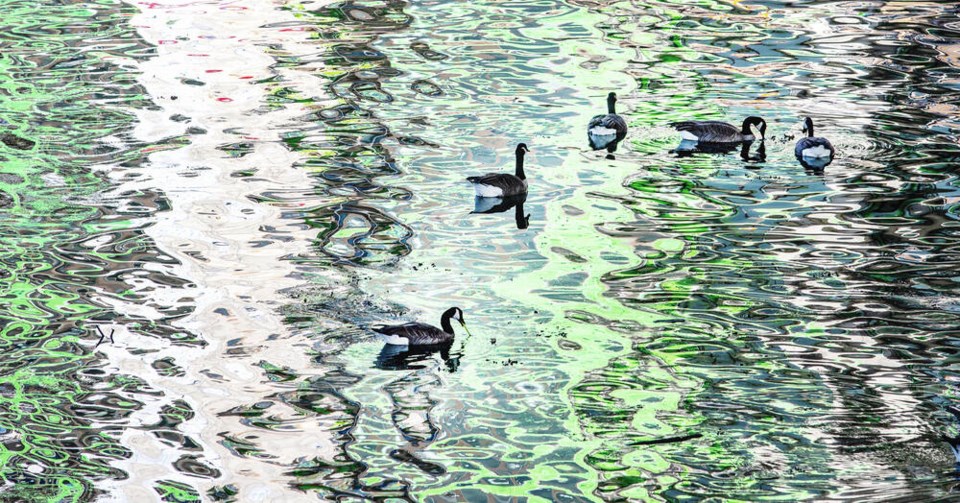Saanich Peninsula farmers are hoping their fields will be safer from voracious Canada geese now that residents have registered little opposition to a CRD plan that includes killing birds and addling their eggs.
The goose-management plan, which CRD board chair Colin Plant expects to come into effect in 2024, needed to clear a process in which opponents were asked to step forward. Few did.
“We are optimistic,” Dan Ponchet, president of the Southern Vancouver Island Direct Farm Marketing Association, said Tuesday.
Geese just cost him $10,000 by destroying his over-wintering broccoli and cauliflower field, eating plants down to a nub. They also gobbled up tops of his carrots in another patch.
“It is costly to all of us.”
Ponchet runs strings over top of fields to discourage geese from landing but they don’t always work.
Another four fields of rye are gone thanks to geese, who do the most damage between August and the end of the year, Ponchet said.
The Capital Regional District went to voters through an alternative approval process that garnered just 175 letters in opposition by its deadline of noon Monday.
That wasn’t enough to kill the management plan, which includes monitoring populations, mapping and public education. It would have taken at least 33,000 opponents — 10 per cent of eligible voters — to either send the plan back to the board or trigger a referendum.
The CRD board will consider final adoption of a bylaw authorizing the goose management plan on Feb. 8. Permits will still be required from the province, which has jurisdiction over wildlife.
Problems associated with non-migratory geese have grown in tandem with their population, which has risen since birds from other parts of Canada were introduced to Vancouver Island between the 1950s and 1980s.
By the 1990s, Canada geese were nesting in most of the south Island. They not only destroy farmers’ crops, but soil parks and playing fields and affect delicate ecosystems.
One goose produces one to two pounds of feces a day, said the city of West Kelowna, which has a goose management plan.
There are between 10,000 and 15,000 geese living in the capital region. An estimated 3,500 to 7,000 spend their winters here.
Plant said the low turnout in the alternative process indicates support for a region-wide goose-management service. There will be an opportunity for stakeholders to engage with the district this year as the service is planned, he said.
“We are going to do it right,” he said. “We are going to take our time and do it in a way that is transparent and the public could weigh in on the measures that we are planning.”
“But the decision to have a strategy I believe has been made now,” and the board is expected to endorse it, he said.
When it comes to measures to reduce goose numbers, Plant said, egg addling is acknowledged by most as being a very effective measure, but the regional district will also be looking at a cull, which will include shooting the geese.
“I know it is a bit of an oxymoron when you are talking about the loss of life, but we will try and do it in a way that does not cause any suffering and is humane.”
Plant said the district is supporting farmers who have been saying for years that action is needed.“We are prioritizing our local environment and our local farms over an uncontrolled population.”
cjwilson@timescolonist.com



